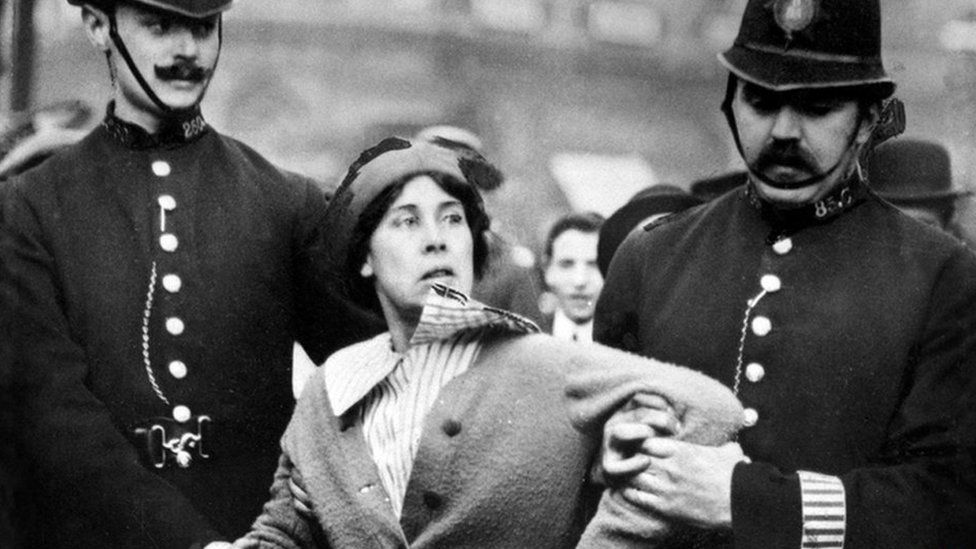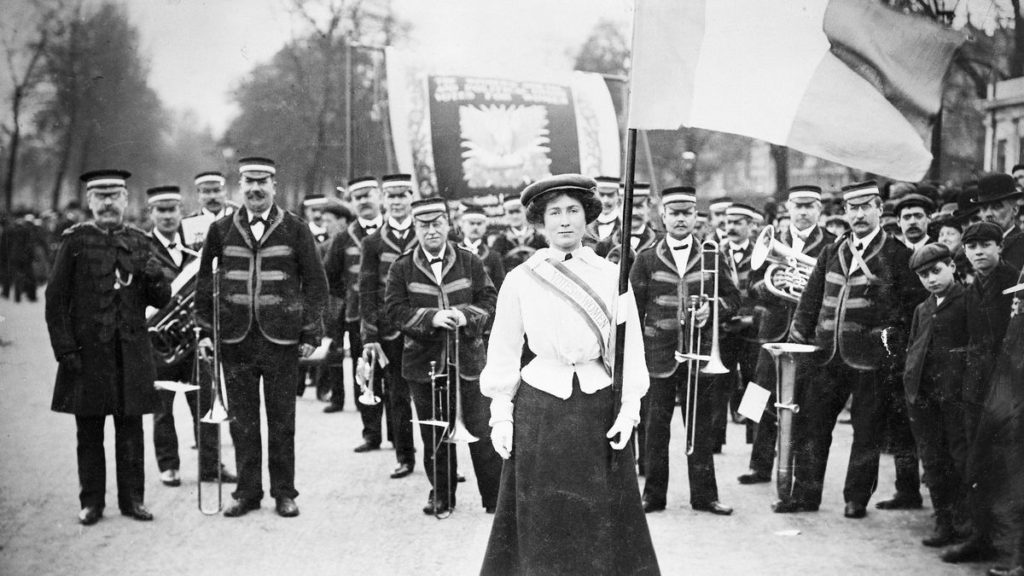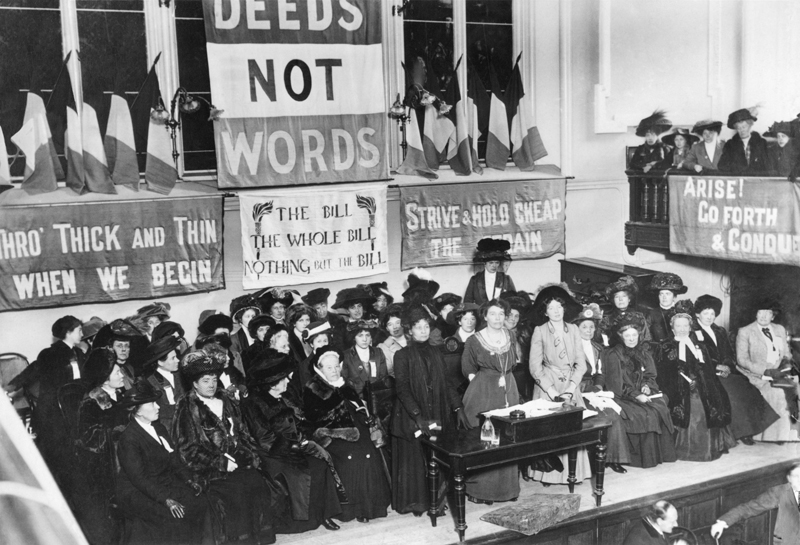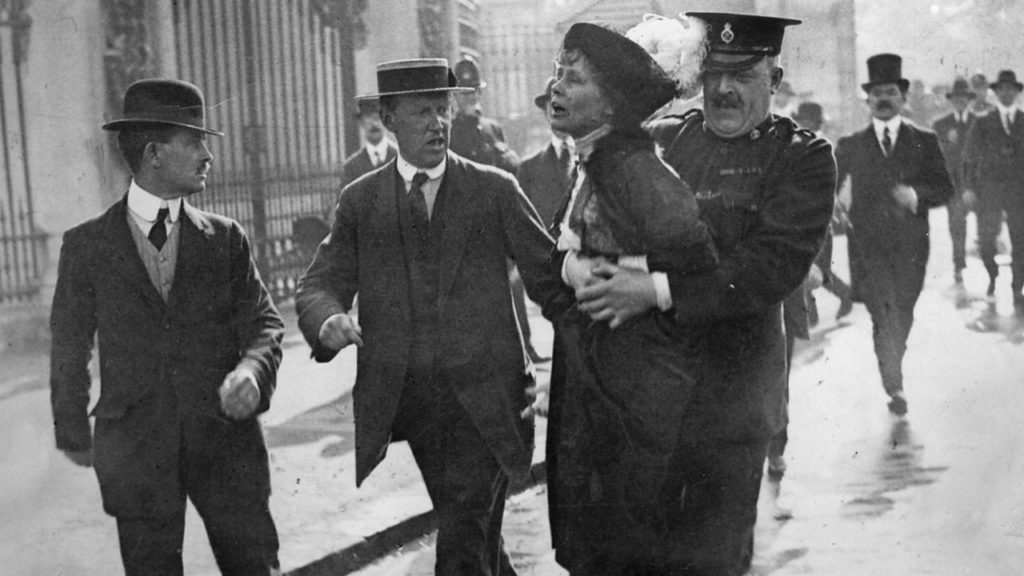Suffragette Movement
Suffragettes: an activist women’s organisations in the early 20th century who, under the banner “Votes for Women”, fought for the right to vote in public elections, known as women’s suffrage. Debated over several days, it was passed on 22nd May 1919 and entered into force on 12th July 1919. Although the movement started out peaceful they weren’t being listened to so they resorted to violent tactics, from smashing windows and arson attacks to setting off bombs and even attacking works of art – in attempt to highlight that there was more care over property than over woman’s rights. Which, was what helped them gain attention, but also brought up issues over police brutality, as seen again repeated recently.
Emmeline Pankhurst: The leader of the suffragettes in Britain, Pankhurst is widely regarded as one of the most important figures in modern British history. She founded the Women’s Social and Political Union, a group known for employing militant tactics in their struggle for equality.
Emily Wilding Davison: Died at a horse race as she ran infront of the kings horse in protest for women’s suffrage. Although she gave no explanation of her plan on what she was trying to do at the race, many believe she was trying to hang a women’s rights banner onto the horse but other people think it could’ve been an accident, suicide attempt. Either way it resulted in a very historic mention for the suffragette movement.

Another example of a woman who risked her life for the suffragette movement was Mary Richardson. She was imprisoned for her protesting activities, so she continued her protest in prison by engaging in a hunger strike. She was forcibly fed in 1914.
“They fed me five weeks by the nose and at the end of that time my nose what they called ‘bit’ the tube, and it would not pass into the throat even though they bent it and twisted it into all kinds of shapes. Instead, it went up to the top of my nose and seemed to pierce my eyes… Then they forced my mouth open by inserting their fingers and cutting my gums… and the lining of my cheeks… when I was blind and mad with pain they drove in two large gags. Then the tubes followed and they pressed my tongue down with their fingers and pinched my nose to weaken the natural, and also the purposeful, resistance of my throat.” – Emily Richardson.






Good blog post. This is the level of detail needed to move from a C to B. well done!